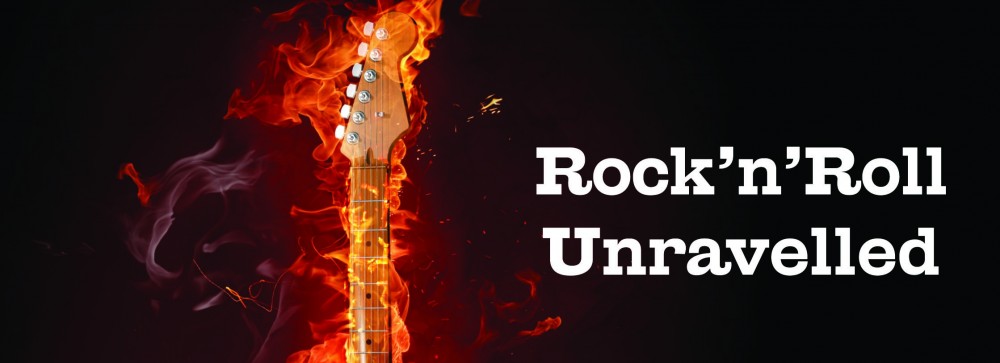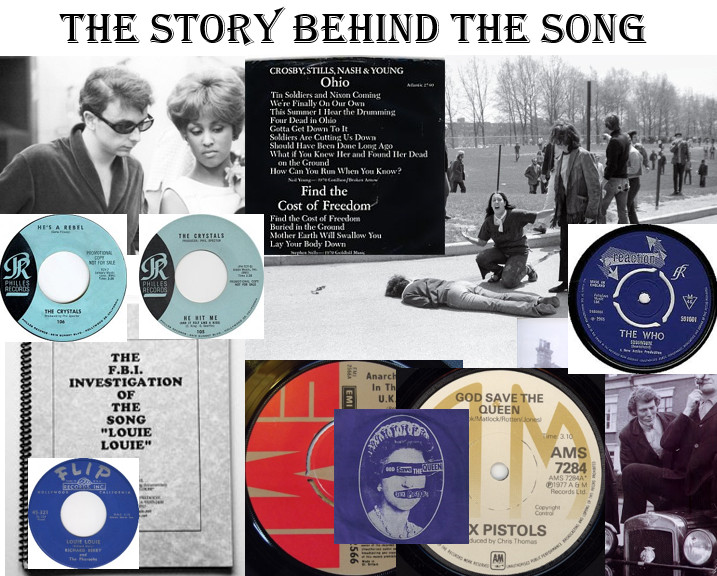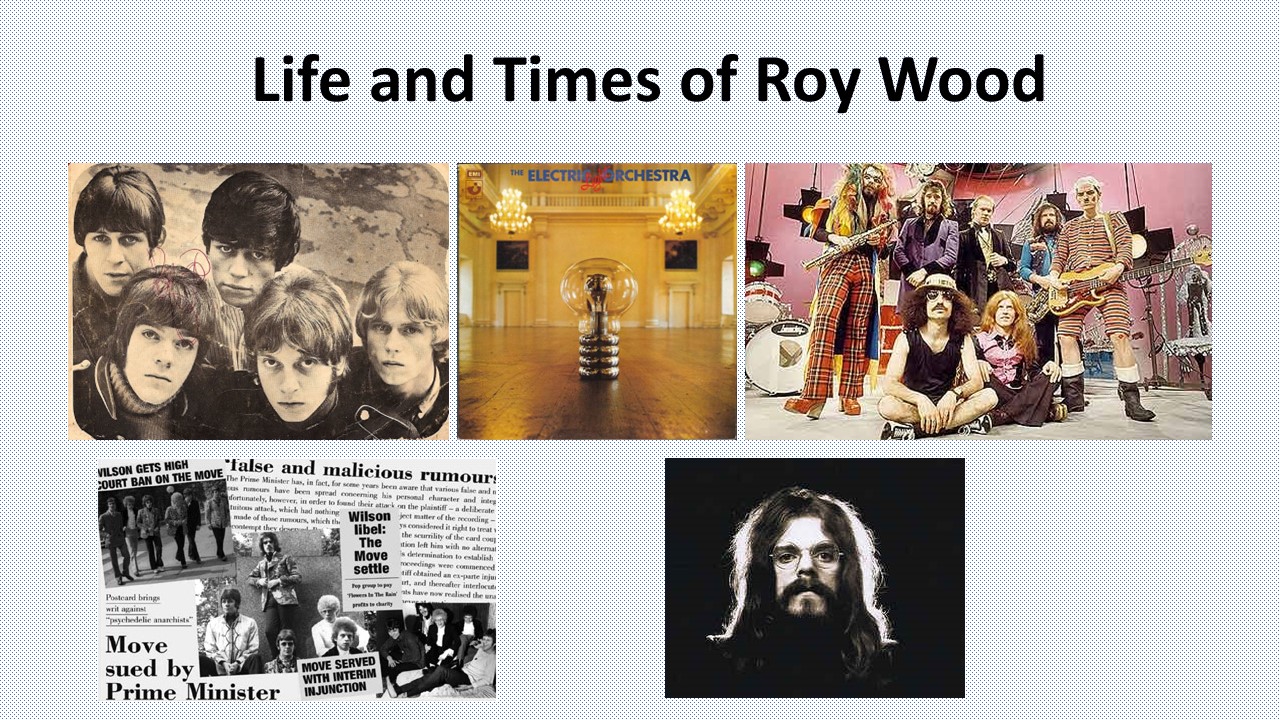The stories behind classic songs from the 1950s, ‘60s and ‘70s
The stories behind classic songs:
God Save the Queen – Sex Pistols 1977
Hello Little Girl – John Lennon 1962
He Hit Me (And It Felt Like a Kiss) + He’s a Rebel 1962
Louie Louie – Richard Berry 1957
Ohio – Crosby Stills Nash & Young 1970
Substitute – The Who 1966
GOD SAVE THE QUEEN 1977
The Sex Pistols released God Save the Queen on the Virgin label after two very short record contacts with EMI and A&M.
Malcolm McLaren managed the Sex Pistols and established them as the poster boys for UK punk rock. They played their first-ever gig at St. Martin’s College of Art in London, on the 6 November 1975.
The band signed their first record deal with EMI on 8 October 1976 for an advance of £40,000. The original lineup consisted of, vocalist Johnny Rotten (later calling himself John Lydon), guitarist Steve Jones, drummer Paul Cook and bassist Glen Matlock. Their first and only single on EMI, Anarchy in the UK c/w I Wanna Be Me, was released on 26 November. It was their only single to feature Glen Matlock and gave them a modest hit peaking at #38.
Notorious TV appearance
On 1 December 1976 they made their notorious appearance on the TV show Today, hosted by Bill Grundy. They were on the show to promote their first single, Anarchy in the UK, and upcoming UK tour. Towards the end of their appearance Bill Grundy goaded Steve Jones to “say something outrageous” and he did. He used the “F”-word. Absolutely unheard of at the time. It shocked the nation. The headline on the front page of the Daily Mirror the following day screamed, The Filth and the Fury! Retribution was swift and merciless. Host Bill Grundy was fired and most of the band’s upcoming tour dates were cancelled by promoters and venue owners.
EMI terminated the Sex Pistols’ contract. The mandarins at the record label realised that the Sex Pistols were far too controversial for the company that gave the world the Beatles. It was not all bad news for the band, they did get to keep the £40,000 advance.
The Sex Pistols and punk rock was now firmly on the map.
It was a time of change for the band. EMI and the Sex Pistols parted company on 6 January. At the end of February bassist Glen Matlock left and was replaced by Sid Vicious.
From EMI to A&M
On 10 March 1977 the Sex Pistols signed to A&M at a mock signing ceremony outside Buckingham Palace. They were only at the label for a couple of weeks but raked in a further £75,000 advance from this second record deal. Their stay was might have been short but it was long enough to record another single. God Save the Queen c/w No Feeling more escaped, than was released. It was officially released but was immediately withdrawn. It is now one of the most sought-after UK singles and sold for £15,652 at Wessex Auctions on 1 November 2019.
It was a turbulent journey for the Sex Pistols after signing to EMI on 8 October. They managed to release one single each at EMI and A&M. Between EMI and A&M, Sid Vicious replaced Glen Matlock on bass.
By the time they reached Virgin, the band was £115,000 richer, from two very short-lived record deals.
The Sex Pistols signed to Virgin and released their first single, God Save the Queen on 27 May. They scored a #2 with this first outing on Virgin and went on to have two more UK top-10 hits, before splitting up at the beginning of 1978.
Check out when John Lydon is … on tour
HE HIT ME (AND IT FELT LIKE A KISS) + HE’S A REBEL 1962
The Crystals released He Hit Me (And It Felt Like A Kiss) as the follow up to their 2nd American hit, Uptown. Despite receiving a good review in Billboard magazine, it was quickly withdrawn. Producer Phil Spector needed to replace He Hit Me and soon had He’s a Rebel in the record stores.
Phil Spector set up his own label, Philles, with Lester Sill in late 1961. It was here that he created his “wall of sound” and became one of the most famous producers in rock’n’roll history.
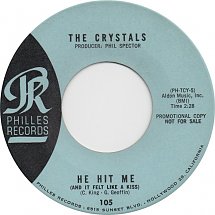
Gerry Goffin and Carole King wrote He Hit Me (And It Felt Like A Kiss) after hearing a story from their baby-sitter, Little Eva. One evening Little Eva arrived for baby-sitting duties covered in bruises. When the writers asked her how she received the injuries, Little Eva replied that they were from her boyfriend but he only hit her because, “he really loves me.”
Little Eva had a world-wide smash hit in 1962 with The Loco-Motion.
The Crystals released He Hit Me (And It Felt Like A Kiss) on 6 July 1962. Billboard magazine’s review described the song as having a “telling message” and predicted that “it could be a winner”. It might well have been but there was no time to find out. The title and content of the song proved a tad too much for DJs and the record-buying public alike. The single was quickly withdrawn. On 13 July Phil Spector was back in the studio to record He’s a Rebel.
He’s a Rebel
Now you’d be forgiven for thinking that he was in the studio with the Crystals, to record the follow up to the Crystals’ Uptown and the replacement for the Crystals’ He Hit Me (And It Felt Like A Kiss). The fact of the matter was that none of the Crystals were with him. He recorded the Gene Pitney penned He’s a Rebel with the Blossoms and their lead singer, Darlene Love!
I was in my teens at the time of this recording and remember that people referred to “the latest Phil Spector single”, rather than the recording artist. He’s a Rebel reinforces the interchangeable nature of Phil Spector’s artists.
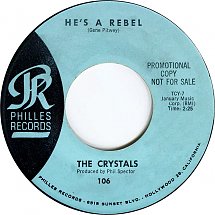
Phil Spector had recently relocated from New York to the West Coast and this was his first recording session in Hollywood’s Gold Star Studios. Vikki Carr was already in the process of recording the song and because of this, Spector was keen to push on. The first time the Crystals knew about the record was when they heard it on the radio!
He’s a Rebel introduced arranger Jack Nitzsche, who went on to have a long recording relationship with Spector. Session musicians known as the Wrecking Crew played on all the wall of sound recordings, these included, keyboard player Leon Russell, drummer Hal Blaine, guitarist Barney Kessel and the sax solo on He’s a Rebel was courtesy of Steve Douglas.
HELLO LITTLE GIRL 1962
The Beatles
From the outset, the Beatles included Hello Little Girl as a regular part of set list, starting as the Quarry Men in 1957 . The writing credit shows as “McCartney & Lennon” but it was John Lennon’s first composition. Pete Best was still the drummer when they performed the song and famously failed their audition at Decca on 1 January 1962. London-based Brian Poole and the Tremeloes won out on the day. The Beatles never released the song in their lifetime but the version recorded at Decca was included on their Anthology 1, released in 1995.
Gerry and the Pacemakers
Gerry and the Pacemakers recorded Hello Little Girl in the summer of 1963, as a possible follow-up to their 2nd #1, I Like It. Their manager, Brian Epstein, wanted them to release the song but they turned it down in favour of You’ll Never Walk Alone.
Rodgers and Hammerstein wrote You’ll Never Walk Alone for their 1945 musical Carousel.
George Martin produced the song and it made history for Gerry and the Pacemakers, when You’ll Never Walk Alone entered the UK charts at #1 on 10 October 1963. This was the first time an artist had entered the charts at #1 with their first three singles. The song went on to became Liverpool Football Club’s anthem.
The Fourmost
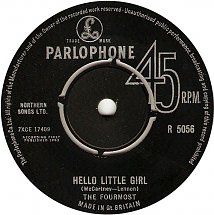
Hello Little Girl
Hello Little Girl finally found UK chart success when the version by the Fourmost entered the charts on 30 June 1963. The Fourmost were one of the very successful Merseybeat groups, and like the Beatles and Gerry and the Pacemakers, they were managed by Brian Epstein.
The Fourmost scored a Top-10 hit with their debut single, Hello Little Girl. Between 1963 and 1965 they made six top-40 appearances on the charts.
It was a different story in America however, despite their UK success they did not manage manage to replicate on it across the pond. This was the time of the British Invasion, when UK bands, particularly Merseybeat groups, were dominating the American music scene. Not so for the Fourmost, sadly, they failed capitalise on this British success.
Check out when Paul McCartney is… on tour
Check out when Ringo Starr is… on tour
Check out when The Fourmost are… on tour
LOUIE LOUIE 1957
Louie Louie started out in the late 1950s and by the early 1960s it was a garage classic. A must-include song in every rock’n’roll band’s repertoire. It has been covered more than 2,000 times.
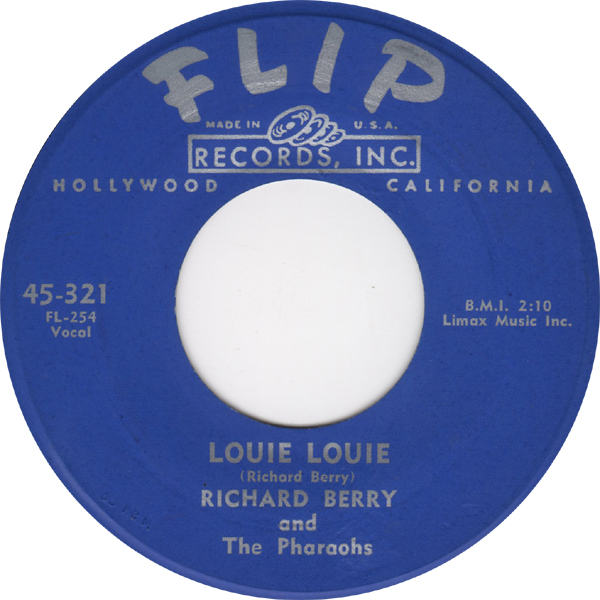
Richard Berry wrote the song and originally released it as Richard Berry and the Pharaohs as a B-side, on the Flip label in 1957.
Richard Berry was a doo wop, R&B singer in the 1950s. In 1954 he made a guest appearance with the Robins on Riot in Cell Block #9, written and produced by Leiber & Stoller. Despite taking lead vocals he did not receive a credit on the label. The Robins later morphed into the Coasters.
After a dozen or so singles, in April 1957 Richard Berry and the Pharaohs released You are My Sunshine with Louie Louie as the B-side. It failed to find any success on the national charts. He sold the rights to Louie Louie for few dollars so that he could afford to get married. After it became a cult classic, he spent 30 years trying to win back the rights to the song. He succeeded.
In March 1961 on the Pacific North West, Rockin’ Robin Roberts released the first garage version of the song. It was a local hit in the Seattle area and the song was regularly included in local repertoires. Two years later two bands from the area, The Kingsmen, and Paul Revere and the Raiders, recorded the song.
The Kingsmen
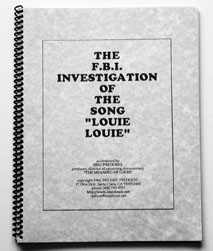
On 30 November 1963, the Kingsmen’s version entered the Billboard Top-40. It peaked at #2 – and a legend was born. They also found success with the song in the UK. Peaking at #26 early in 1964, it was their only UK hit.
Notoriety followed, the Kingsmen’s version of Louie Louie attracted an FBI investigation to determine if the lyrics were obscene. The ensuing 118-page report decided that they weren’t.
The song is unique in its attraction. Radio stations have devoted entire days to playing it. Louie Louie college parties have rocked to the song all night long. It has attracted over 2,000 cover versions including, The Kinks with a beat music version, a gentle version from The Sandpipers, a harder edged punk-esque version from The Sonics, John Belushi sang it in the movie National Lampoon’s Animal House, Frank Zappa has recorded various versions over the years, and the Rice University Marching Owl Band rendition has to be heard to be believed.
OHIO 1970
Neil Young wrote Ohio, an American hit for Crosby Stills and Nash in 1970. The song pays homage to four students shot dead by the Ohio National Guard during an anti-Vietnam War demonstration at Kent State University on 4 May 1970.
Crosby, Stills & Nash came together in mid-1969 after, David Crosby was sacked from the Byrds, Stephen Stills’ band Buffalo Springfield imploded and Graham Nash parted company with the Hollies. Neil Young regularly stood in with the trio and they also made several recordings as Crosby, Stills, Nash & Young. Neil Young was also a member of Buffalo Springfield.
Vietnam War
Direct American involvement in the Vietnam War began after the colonial French forces were defeated at Dien Bien Phu in 1954.
The first US ground forces, 3,500 Marines, arrived in 1965.
By the time of the Tet Offensive in January 1968, there were over half a million American troops in Vietnam. During the Tet Offensive communist forces simultaneously attacked dozens of targets in South Vietnam. They were eventually repulsed; America won the battle but lost the war. Tet was the turning point in the War because it turned American public opinion firmly against the War.
Peace negotiations began on 10 May 1968 but did not conclude until 1973.
In the 1960s college students were at the forefront of anti-War protests.
Kent State University
The events at Kent State University started to unfold on 1 May, when the students held an anti-war demonstration on the grassy Commons area. As a symbolic gesture, a copy of the American Constitution was buried in the middle of the campus.
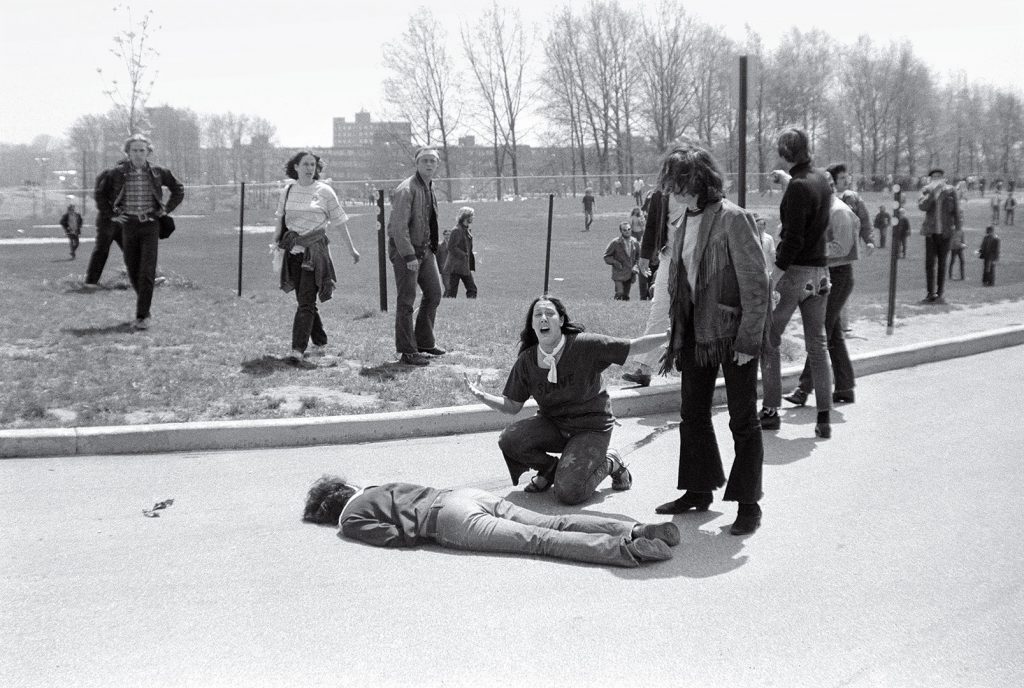
The protest moved to downtown Kent that evening, where it escalated into violent confrontation between the demonstrators and the police. This prompted Kent’s mayor, LeRoy Satrom, to declare a state of emergency.
On Saturday 2 May Ohio Governor, James Rhodes sent the Ohio National Guard to Kent. By Sunday there were 1,000 members of the Guard on campus. That evening there was another rally on the campus, and this time the National Guard used tear gas to disperse the crowd.
A demonstration was scheduled for Monday, 4 May. University authorities tried to ban the event but by midday 3,000 people were gathered on the University’s Commons. When the crowd refused to disperse the National Guard once again resorted to the use of tear gas but this time it failed to break up the anti-war demonstration. Students yelled and threw stones at the National Guard and a small number of Guardsmen responded by firing directly into the crowd. When the shooting stopped four students were dead, with another nine wounded. The four students who died were, Allison Krause, Jeffrey Miller, Sandra Scheuer and William Schroeder. John Filo was a Kent State photography major in 1970. He won a Pulitzer Prize for his iconic photograph showing a distraught Mary Ann Vecchio kneeling over the dead body of Jeffrey Miller.
Ohio entered Billboard Top-40 on 11 July, peaking at #14. It failed to chart in the UK.
Check out when David Crosby is… on tour
Check out when Stephen Stills is… on tour
Check out when Graham Nash is… on tour
Check out when Neil Young is… on tour
SUBSTITUTE 1966
A legal battle between the Who and Decca followed the release of Substitute in 1966. Their former producer at Brunswick, Shel Talmy, took a dim view of the band re-recording Instant Party for the B-side of Substitute. It was the first single on their new label Reaction and Talmy was a tad peeved because they had already recorded the song during their stay at Brunswick.
My Generation was their last hit on the Brunswick label and peak at #2. After that, the Who moved to Robert Stigwood’s new Reaction label; distributed by Atlantic in America and Polydor throughout the rest of the world.
Substitute, was released simultaneously, with two different B-sides, Instant Party and Circles, although, they were both the same song.
The Who were still with Brunswick in mid-January when they recorded Instant Party Mixture and the first version of Circles. The session at the IBC studios was handled by producer Shel Talmy and engineer Glyn Johns. In the legal dispute that followed, it was released as the B-side of Legal Matter and titled Instant Party.
The move from Brunswick to Reaction
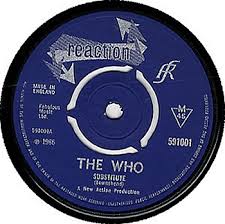
The Who recorded Substitute at Olympic Sound Studios on 12 February, with producer Kit Lambert. It attracted over 35,000 advance orders and looked set to give them another smash hit.
Shel Talmy and Decca took a very dim view of the Who using Instant Party/Circles as the B-side on their first release on Reaction because they had already recorded the song during their time at Brunswick. To use as the B-side of their first single on their new label Reaction. So much so that they launched legal action against the Who.
On 7 March Decca rush-released Legal Matter c/w Instant Party, with Legal Matter taken from their Brunswick album. The following day Shel Talmy obtained an interim injunction for breach of copyright. This meant that sales of the single were stopped and the Who were prohibited from recording until 4 April.
Substitute entered the NME Chart at #19 on 9 March. A notice was served on Polydor to cease distribution, even though 50,000 copies of the single had already been pressed up.
The Who Orchestra
To prevent sales of Substitute stalling and the single falling out of the charts, it was re-released on 14 March with a new B-side, Waltz for a Pig. “The Who Orchestra” was credited on the label for this new flip side. To overcome the dilemma, the Graham Bond Organisation stepped in because the Who were prohibited from recording. This replacement for Instant Party/Circles received a writing credit for “Harry Butcher”, a pseudonym for the Organisation’s drummer, Ginger Baker. Ginger Baker joined Jack Bruce and Eric Clapton to form Cream shortly afterwards.
The injunction was removed by a High Court Judge and by the 18 March Substitute back on sale in its original form. It eventually reached #5 on the charts and sold 200,000 copies
